This one has been coming for a while. I see it on Facebook groups on an almost daily basis… the posting of a picture, a request for identification, and the stream of “onyx” “Mexican onyx”… a misidentification and commonly used ‘trade name’ for banded Calcite from Pakistan and Mexico.
So, I’m going to clear it up for you.
Why do so many people call this material Onyx?
Simply put, the most obvious choice behind it is financial – maybe it was thought that Onyx commanded a higher price as a decorative stone.
Giving stones a more exotic name is common practice – whether in the landscaping and architectural world or the mineral collecting/new age worlds. A quick visit to a landscaping stone website will see stones with names like ‘Ebony black cobbles’, or ‘red laguna boulders’, or ‘angel whirlpool boulders’ – and it is obvious why – calling these stones by their mineralogical names would be very dull. Nobody is likely to call up asking for some nice ‘glacially rounded pink Quartzite’.
In the mineralogical world, this is done too – including on this website. There are many trade names used for materials that don’t necessarily have an exciting mineralogical name – Rainbow Moonstone is a perfect example. Rainbow Moonstone is not a Moonstone at all, rather a variety of pale-coloured Labradorite. Blue tinted Tigers Eye is often given the name ‘Hawks Eye’.
Over time, trade names become completely ubiquitous with a certain material or product. We all know what a biro is, or a hoover, right?
To call this banded Calcite ‘Onyx’ is no different from calling a BIC pen a Biro – unimportant in most peoples eyes, but in the trade or for collectors, an important distinction.
Before I show you how to test your material, a bit of information about Onyx and Calcite.
What is Calcite?
Calcite is CaCO3, otherwise known as Calcium Carbonate – it is given colours and patterns by mineral inclusions or impurities.
Mineralogically speaking, Calcite has the following characteristics:
Often fluorescent.
What is Onyx?
Onyx is SiO2, a banded variety of Chalcedony. Chalcedony is a member of the Quartz group.
Mineralogically speaking, Onyx has the following characteristics:
As you can see, there is some overlap in the information above, but not too much. Onyx and Calcite are very different materials.
If we were to assume that a specimen could be either, there are several tests which are ruled out by their similar values.
- A streak test is not diagnostic, as both minerals have a white streak colour.
- A specific gravity test would be ruled out as they both have a similar density.
- Luster, fracture, and crystal habit are also not ideal tests here.
However, there is some good news – the hardness is clearly very different, and Calcite produces bubbles when in contact with acids.
So, is it banded Calcite or Onyx?
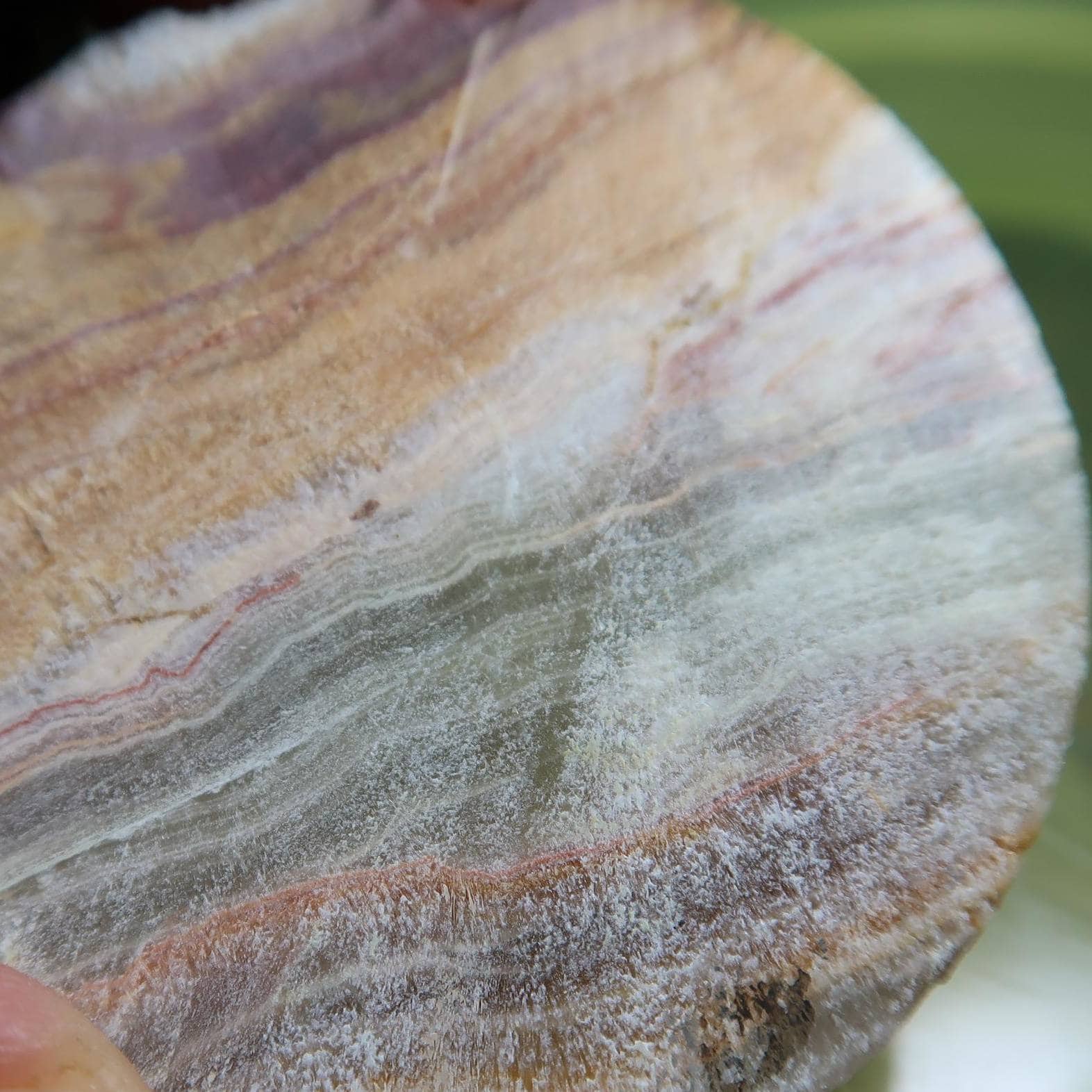
This specimen was cut from an egg made of the ‘unidentified substance’, commonly sold as Mexican or Pakistani Onyx.
I’d been meaning to produce this post for a while but was a little unwilling to break a decorative piece that someone could still have gotten some enjoyment out of; luckily a friend of mine cuts and polishes minerals into cabochons etc and was able to supply me a small piece.
This picture simply shows a cross section – the rounded edges were polished as they would have formed the outside of the decorative egg he cut up.
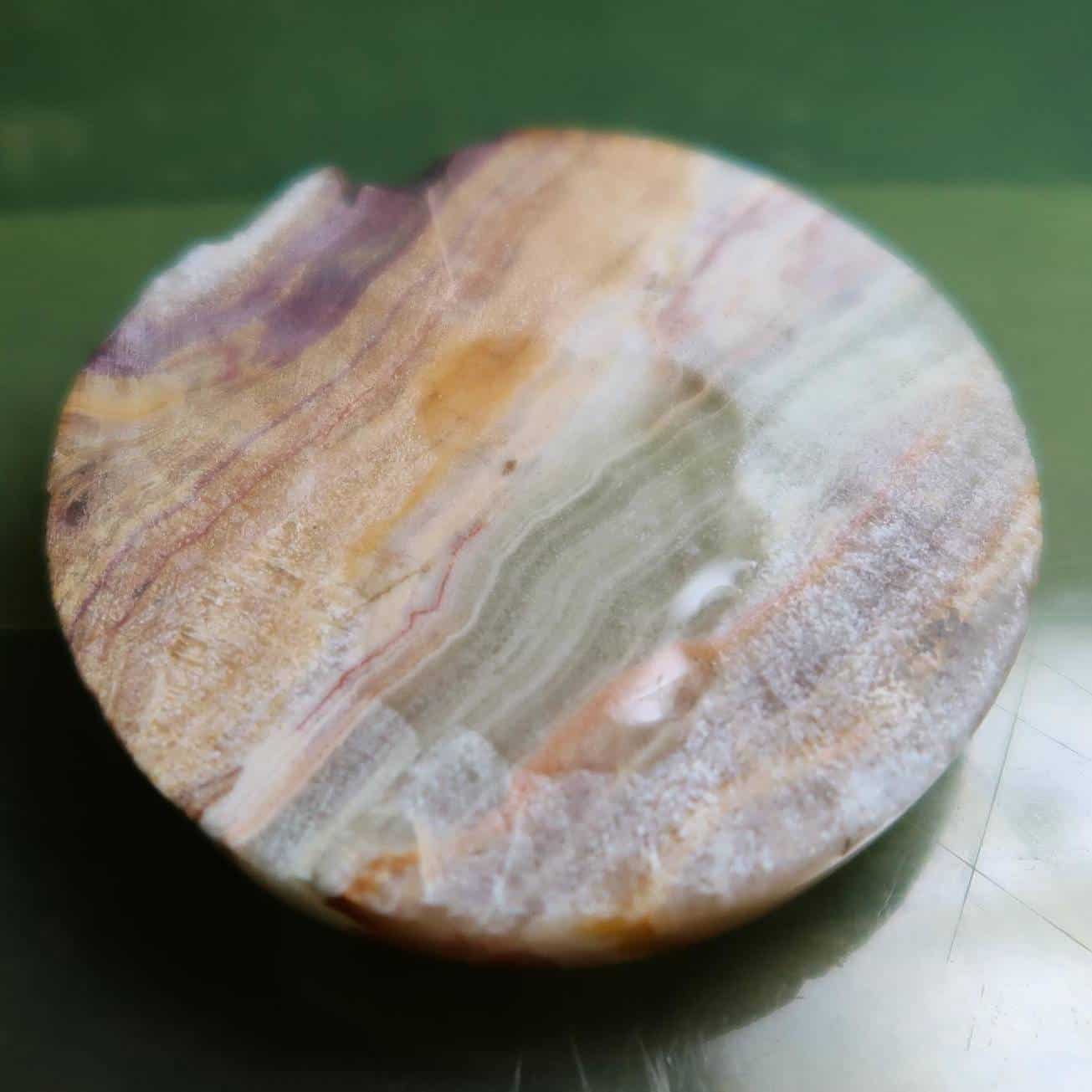
Splosh. That’s some white malt vinegar. I’m not a biochemist or an expert in foods etc, but I do know vinegar contains acetic acid.
Wikipedia claims that the type I’ve used contains about 5-8% acetic acid, but I’ve got no way of verifying that – doesn’t really matter too much, as long as we know the liquid is acidic rather than alkaline.
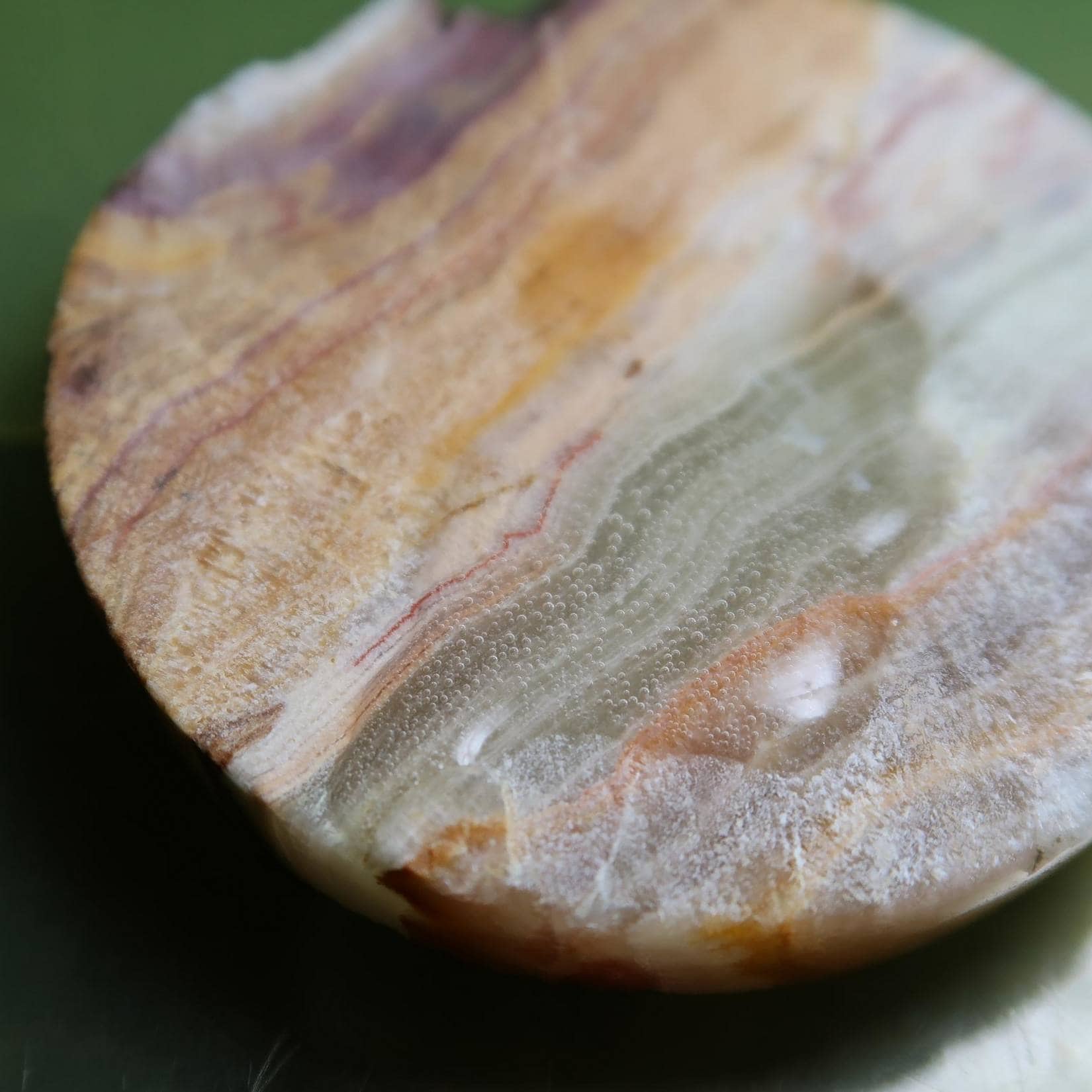
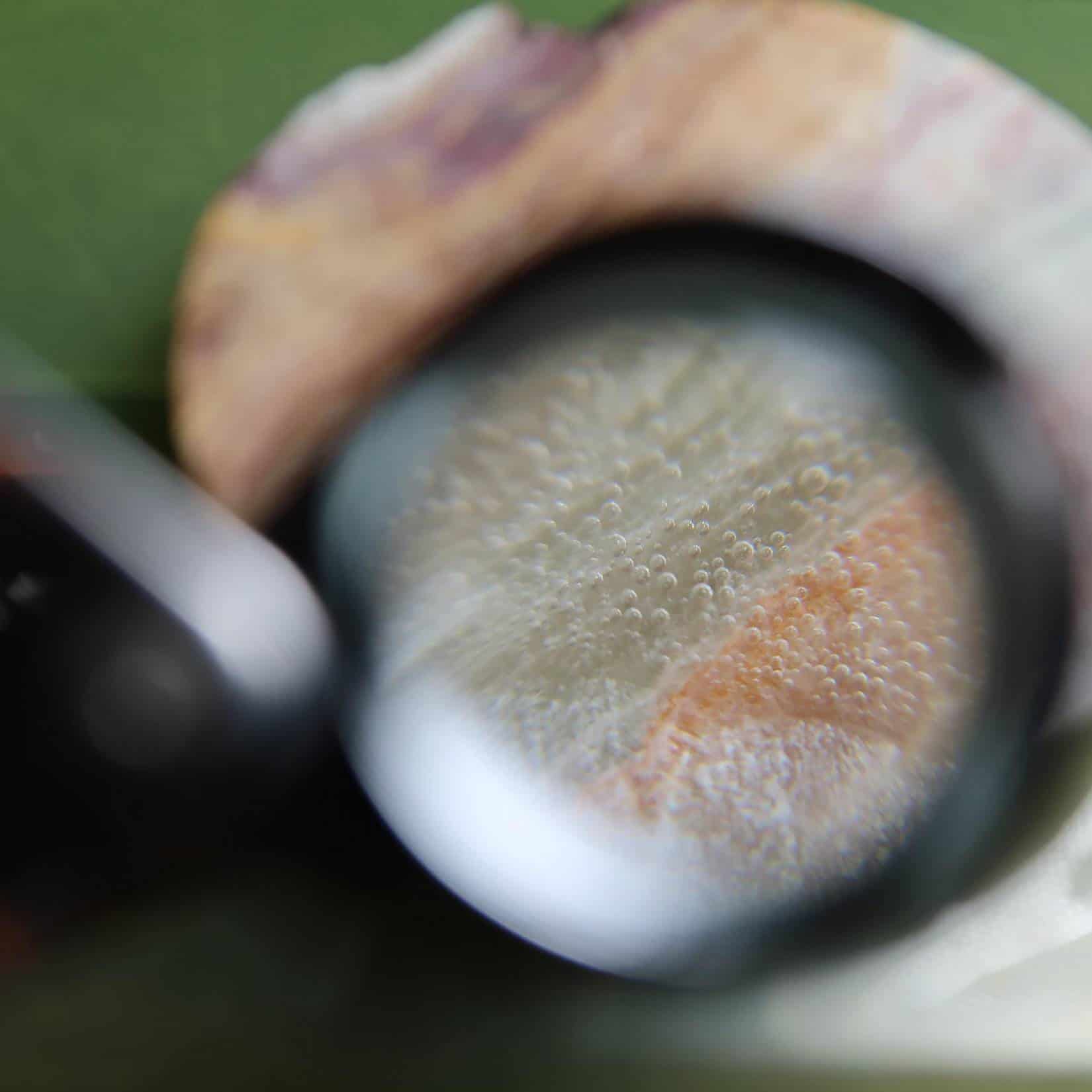
This test is not fully diagnostic on its own – it just tells you that the mineral specimen is reactive to weak acids.
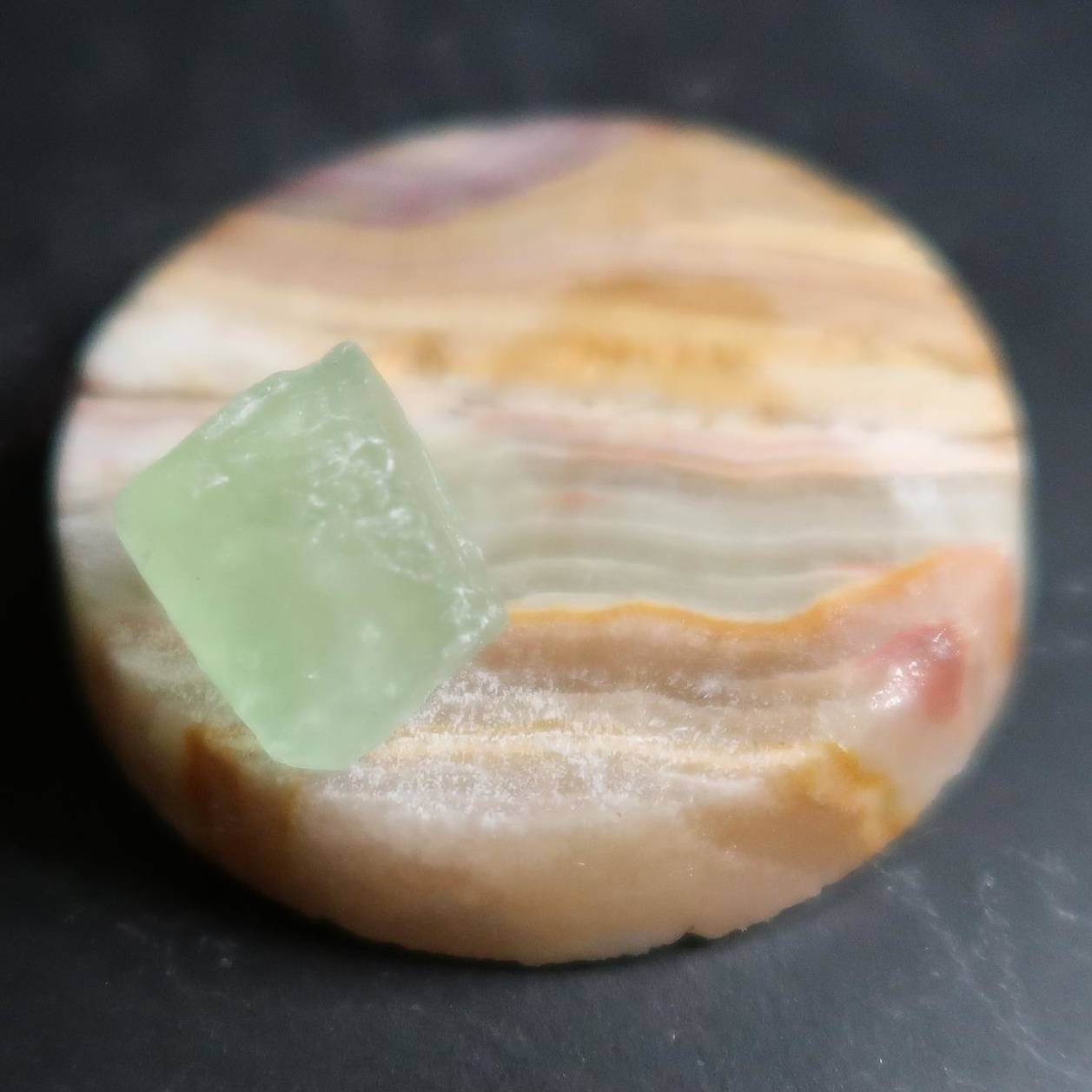
If you aren’t aware, the Mohs scale governs mineral hardness and allows for narrowing down the identification of a specimen by testing whether other known minerals or materials are able to scratch it.
In this context, Calcite has a Mohs hardness of around 3 and Onyx has a Mohs hardness of 6.5-7. Thus, Onyx will scratch Calcite, but Calcite will not scratch Onyx.
In the photograph is an octahedral crystal of Fluorite, a mineral measuring 4 on the Mohs scale.
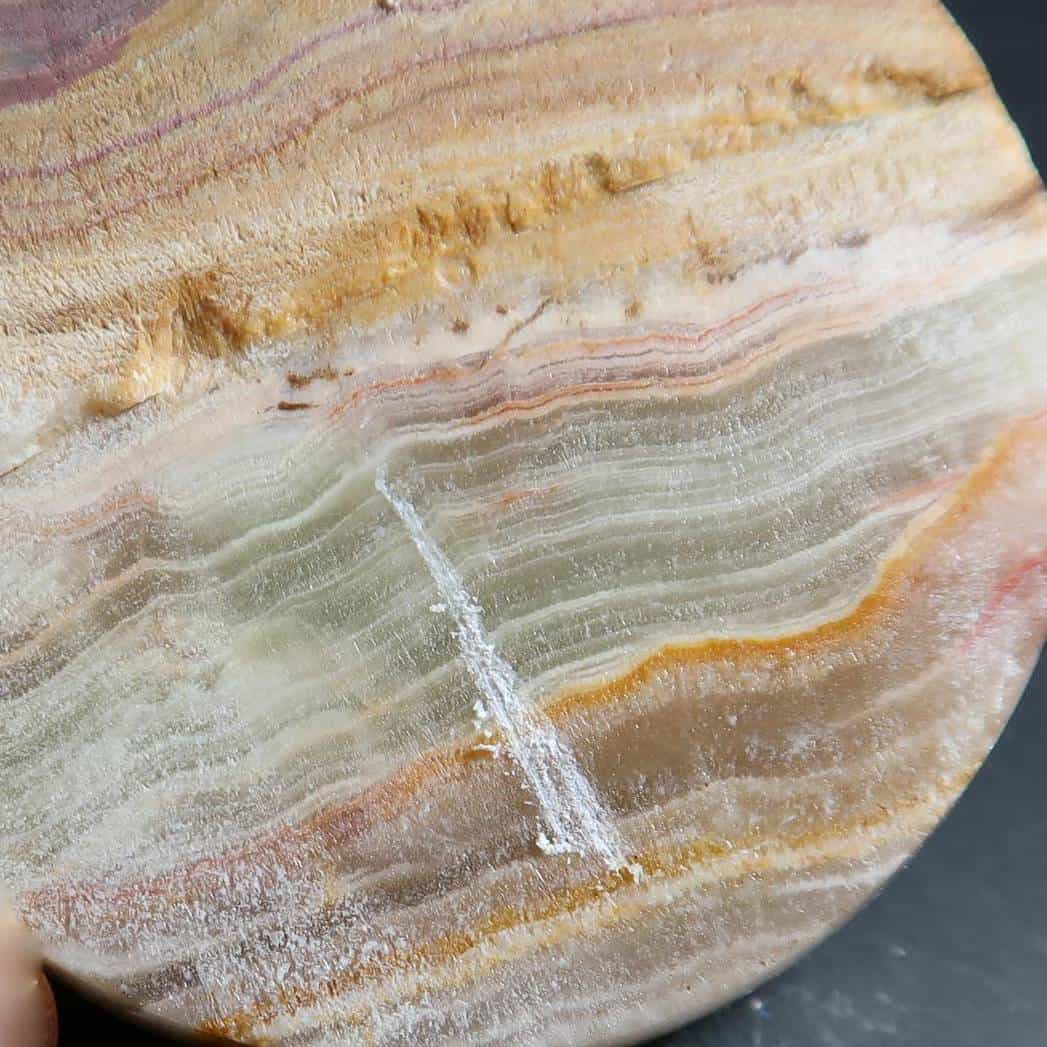
To further narrow this down, ideally we would test with specimens measuring 2, 2.5, 3, and 3.5 on the Mohs scale. If that isn’t an option, whole numbers are usually enough. In this case, the specimen is scratched by a hardness of 4, but not by 2. We can say then that the hardness is 2.5 – 3.5.
The fact that the specimen reacts with weak acids and has a hardness of around 3, along with its appearance, ought to be enough to make a reasonable deduction that this material is Calcite.
Hopefully, this should make things a little clearer, although I suspect the misuse of the name will remain.
Thanks to John Allison of Brighton Gemstones for supplying a piece of banded Calcite so I didn’t have to smash an ornament up… 🙂


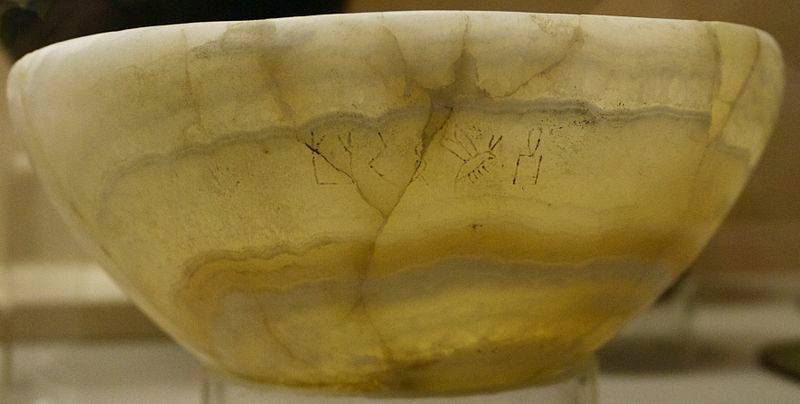
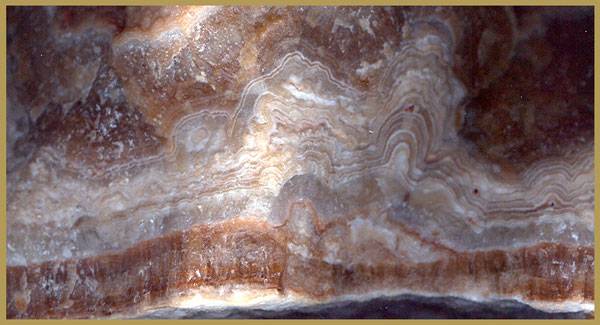
Thank you for this video, I have been having trouble trying to identify some towers that I have. Was unsure if they were calcite or onyx so did the scratch test with a piece of raw fluorite and it didn’t scratch it in the slightest so they must be onyx. I bought them in a live show and thought they were caribbean calcite (that is what they was being sold as) and as soon as i received them I knew they was not caribbean calcite but I still don’t know what to call them.
Unless they’re black and white they’re unlikely to be Onyx. However, Caribbean Calcite is a trade name, so may consist of more than one mineral – for example, Calcite, and Aragonite – Aragonite is a little harder than Calcite.
What if it IS black, white (& goldish-brown) w/the harness of onyx?
I also was sold “Caribbean Calcite”, but know that it’s not even close…
It may well be Onyx or an Agate. Do you have a photo?
You should also specify what Onyx is. Onyx is cryptocrystalline quartz, or “Chalcedony.” The following names are all chalcedony and have earned their names through long usage: agate, moss agate, jasper, Onyx, carnelian, sard, chert, flint, chrysoprase, and chrysocolla chalcedony (gem silica). Onyx is a straight-banded agate (no waves, curves or swirls). *reference John Sinkankas, “Mineralogy”
-Michael Hitt
I figured “Onyx is SiO2, a banded variety of Chalcedony. Chalcedony is a member of the Quartz group.” would be sufficient. This is only an article for beginners to spot the pieces of missold Calcite, so I don’t want to add anything too confusing to it.
Jacqueline, Caribbean calcite does not look the SLIGHTEST like onyx. And Caribbean calcite is often confused with blue aragonite. Most pieces like what you describe, you’ll see on “Lives” nowadays being sold as onyx, or even alabaster. The chemical makeup of all of these different minerals is different.
And “Caribbean” calcite is just a fancy name to sell more product.
Aragonite has a Mohs hardness of 3.5-4, so that fluorite scratch test may not be the best way to discern what you have.
Love accurate information! I tested what I was told was green onyx with the vinegar method you stated, and lo! It was green calcite. Still love it, but at least I now know what I’m dealing with. Thanks!